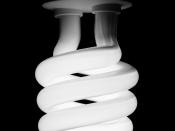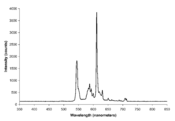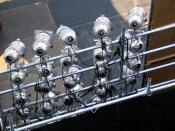I will be discussing lighting units, their uses and their pro's and con's. The ability to construct a well light set is relied upon the Director of Photography, and ranges from being used for dramatic intensity or just softening a room. Unlike human eyes, sets need some adjustments to keep up with lighting balance. A good knowledge on differing colour temperatures and what gels can provide for a scene.
INTERIOR LIGHTING EQUIPMENT
A lighting fixture, or better related to as a Lighting UNIT is basically what we refer to the globe or bulb. They are identified by type and power consumption. The brightness of a bulb is referred to as the Wattage, which is a reflection of its power consumption.
The intensity of light decreases the further from the subject it is - know to us as Falloff. Falloff is inversely proportional to the square of the distance e.g.
(ù/x"). The sharper the falloff, the closer the subject is to the light. Soft light sources fall off more sharply than focussed hard light sources.
COLOUR TEMPERATURE
Colour temperature, measured in degrees Kelvin, is the measure of how warm or cool the light sources and colours are. Our brain compensates for the differing colour temperatures and so what appears white to us, may appear to have a green, orange or blue tint on a camera (with no colour balancing). Daylight is 5600K.
BULBS
Bulbs differ in type, colour and intensity. An average household bulb emits 2900K Wattage while white Tungsten emits 3200K. Photo Bulbs look and are like average household bulbs yet are more powerful like Photofloods emitting 250W brightness.
Majority of films use 3200K Tungsten lights, which are small and efficient. They can be balanced to daylight by changing its colour temperature. This is accomplished by placing a blue gel...



Topic
Weird topic! But you have written so well about such a boring thing! No affence! This piece of writting makes light units seem intresting as you have added your own views and some facts about were you live and the light units there. So well done on such a hard topic!
5 out of 5 people found this comment useful.